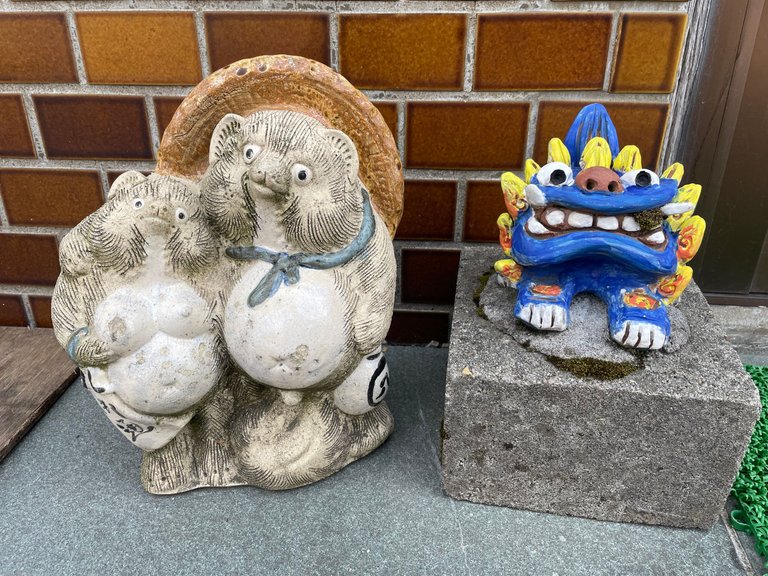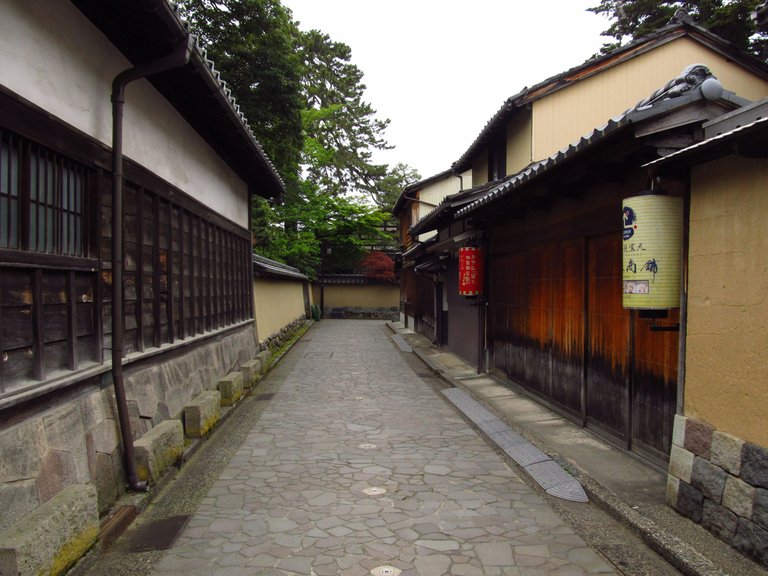Ready for Kanazawa? =/= Bereit für Kanazawa? 👹🍣🎎 Wonderful Japan ENG-GER
As I wrote before, our last trip took us down to the Ishikawa prefecture into the city of Kanazawa. Apparently Kanazawa has become a quite popular place, and you can now see lots of Japanese and international visitors flocking through the streets of the city center. However, I still have the feeling that outside of Japan, the city is not that well know, especially in comparison with the much more famous places like Tokyo, Kyoto or Osaka. That's why I think I should start telling you a bit more about it and why it has become on of my favorite cities here in Japan. Well, too be honest, I have quite a few places I really like and always want to go again, but Kanazwa is definitely close to the top of that list.
One of the most attractive aspects of this city is its past as a castle town. Kanazawa is truly rich in history and culture, shaped by centuries of tradition and artistic refinement. It became a prominent cultural hub during the Edo Period (1603–1868) under the rule of the Maeda clan, who governed the Saga Domain. The Maeda lords were known for their patronage of the arts, fostering crafts such as gold leaf production, lacquerware and pottery. They also promoted cultural activities like Noh theater and tea ceremonies, which remain integral to Kanazawa’s identity today.
The city’s name, Kanazawa (金沢), translates to "gold marsh," and legend has it that a peasant discovered gold dust in a local stream, hinting at the city's historical connection to wealth and craftsmanship. Unlike many other Japanese cities, Kanazawa was spared from destruction during World War II, allowing its Edo-era districts to remain remarkably well-preserved. Today, visitors can explore these historic areas, including the Nagamachi Samurai District and the Higashi Chaya Geisha District, which offer a glimpse into the lifestyles of samurai and geisha from centuries past.
Kanazawa is also home to Kenrokuen Garden, one of Japan’s most celebrated landscape gardens, known for its seasonal beauty and intricate design. In addition the city continues to embrace its artistic heritage, with institutions like the 21st Century Museum of Contemporary Art blending traditional and modern influences.
There are quite some places of interest of every keen traveller and if you ever happen to make it to Japan, I recommend to put Kanazawa on the list of places you want to visit. I have now been here twice so far and I definitely will come back here again in the future. That might take a while, so for the time being I will enjoy the fresh memories I just gathered and share some of the pictures I have brought back with me. As always I have taken quite some photos, and some of them I want to share with you here at this place. Today is just the start...
the old Nakamachi Samurai district
DEUTSCH
Wie ich bereits geschrieben habe, führte uns unsere letzte Reise in die Präfektur Ishikawa in die Stadt Kanazawa. Offensichtlich ist Kanazawa ein recht beliebtes und populäres Reiseziel geworden, und man kann dort jetzt viele japanische und internationale Besucher durch die Straßen des Stadtzentrums strömen sehen. Dennoch habe ich das Gefühl, dass die Stadt außerhalb Japans noch nicht so bekannt ist, vor allem im Vergleich zu den viel berühmteren Orten wie Tokio, Kyoto oder Osaka. Deshalb denke ich, ich sollte euch ein bisschen mehr über darüber erzählen und warum Kanazawa zu einer meiner Lieblingsstädte hier in Japan geworden ist. Um ehrlich zu sein, gibt es eine ganze Reihe von Orten, die ich immer wieder besuchen möchte, aber Kanazwa steht definitiv ganz oben auf dieser Liste.
Einer der attraktivsten Aspekte dieser Stadt ist ihre Vergangenheit als Burgstadt. Kanazawa ist wahrlich reich an Geschichte und Kultur, geprägt von jahrhundertelanger Tradition und künstlerischer Vielfalt. Während der Edo-Periode (1603-1868) wurde die Stadt unter der Herrschaft des Maeda-Clans, der das Saga-Gebiet regierte, zu einem bedeutenden kulturellen Zentrum. Die Maeda-Fürsten waren bekannt dafür, dass sie die Künste förderten und Kunsthandwerk wie die Herstellung von Blattgold, Lackwaren und Töpferwaren vorantrieben. Sie förderten auch kulturelle Aktivitäten wie das Noh-Theater und Teezeremonien, die auch heute noch fester Bestandteil der Identität Kanazawas sind.
Der Name der Stadt, Kanazawa (金沢), bedeutet übersetzt „ goldener Sumpf“, und die Legende besagt, dass ein Bauer Goldstaub in einem örtlichen Bach entdeckte, was auf die historische Verbindung der Stadt zu Reichtum und Handwerkskunst hinweist. Im Gegensatz zu vielen anderen japanischen Städten blieb Kanazawa während des Zweiten Weltkriegs von Zerstörungen verschont, so dass die Stadtteile aus der Edo-Zeit bemerkenswert gut erhalten geblieben sind. Heute kann man diese historischen Viertel selber erkunden, darunter das Samurai-Viertel Nagamachi und das Geisha-Viertel Higashi Chaya, die einen Einblick in den Lebensstil vergangener Jahrhunderte bieten.
In Kanazawa befindet sich auch der Kenrokuen-Garten, einer der berühmtesten Landschaftsgärten Japans, der für seine jahreszeitliche Schönheit und sein kunstvolles Design bekannt ist. Darüber hinaus pflegt die Stadt ihr künstlerisches Erbe mit Einrichtungen wie dem 21st Century Museum of Contemporary Art, in dem sich traditionelle und moderne Einflüsse vermischen.
Es gibt eine ganze Reihe von Sehenswürdigkeiten, und für jeden begeisterten Reisenden sollte etwas dabei sein. Wenn ihr es auch einmal nach Japan schaffen solltet, empfehle ich euch, Kanazawa unbedingt auf die Liste der Orte zu setzen, die ihr besuchen wollt. Ich war jetzt schon zweimal hier und werde auf jeden Fall eines Tages wiederkommen. Das könnte zwar eine ganze Weile dauern, also werde ich in der Zwischenzeit die neuen Erinnerungen genießen, die ich gerade gesammelt habe, und einige der Bilder teilen, die ich mit nach Hause gebracht habe. Wie immer habe ich eine ganze Reihe von Fotos gemacht, und einige davon möchte ich an dieser Stelle mit euch teilen. Heute ist erst der Anfang...
scene of one of the three Chaya Geisha districts



